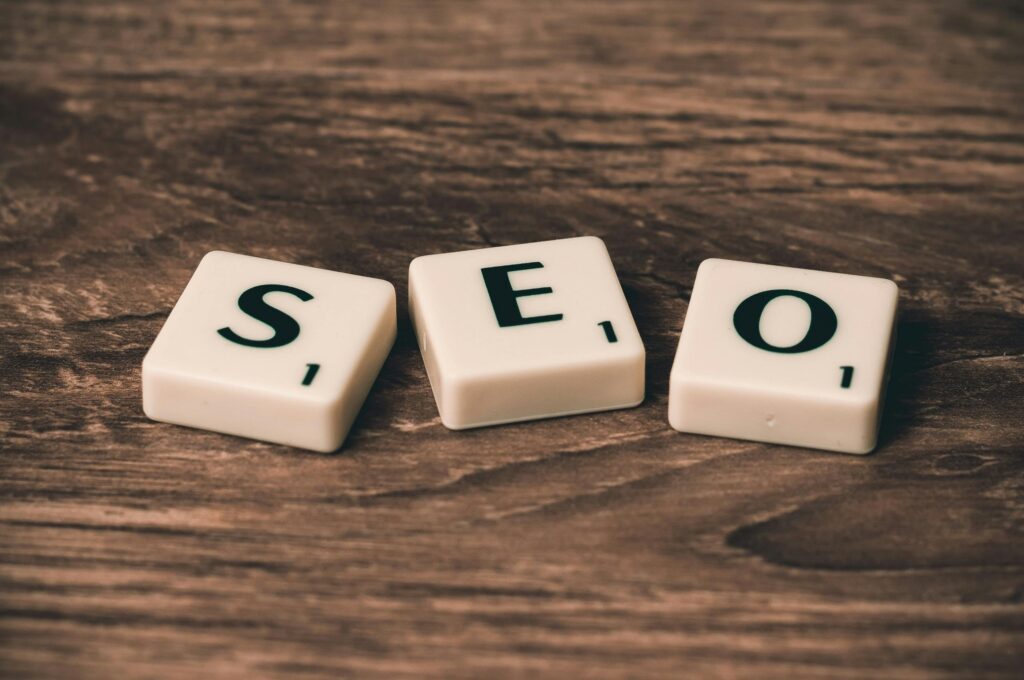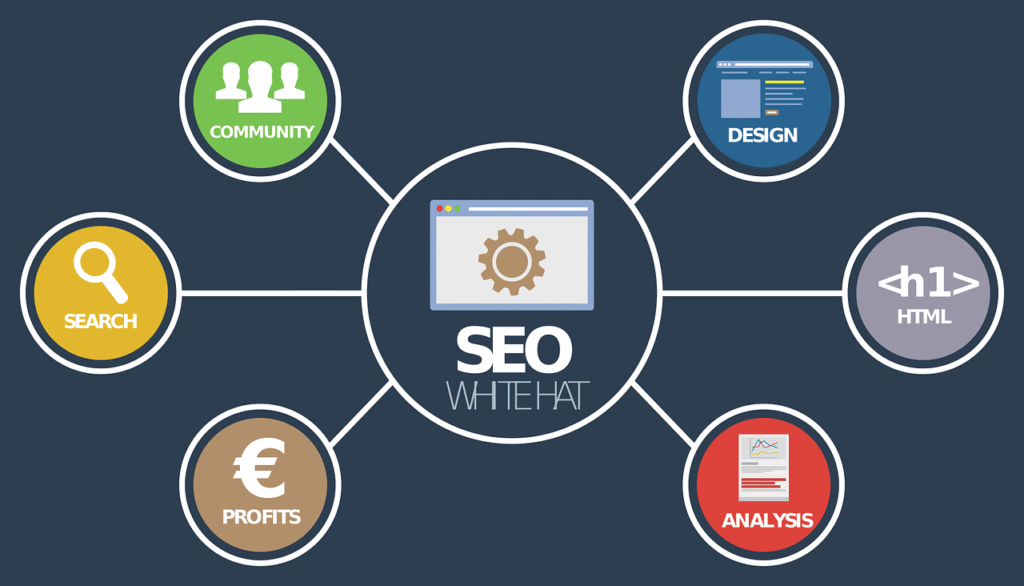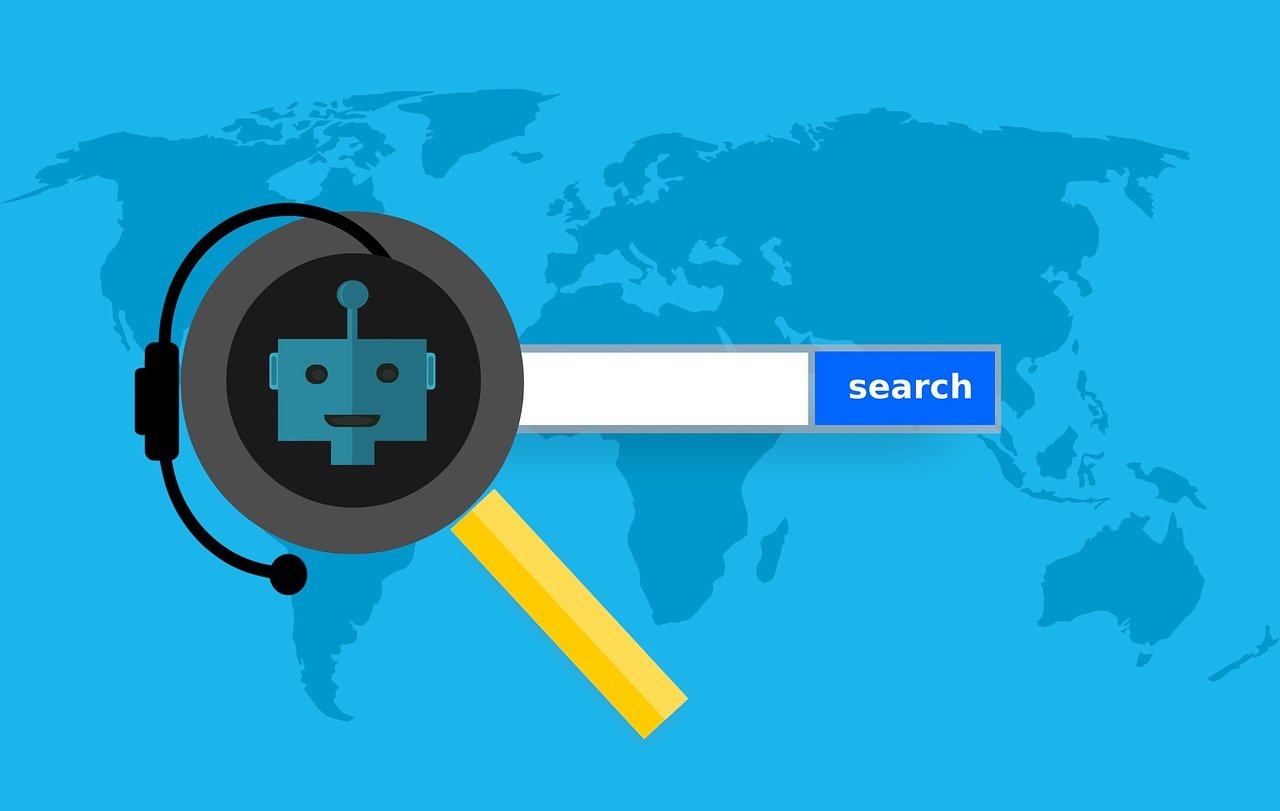
AI SEO: The Future of Search Engine Optimisation and How to Stay Ahead in 2026
In short, AI SEO is changing how websites rank in 2025 and beyond. 77.9% of SEO professionals say that AI-generated answers are their biggest worry, so optimising for AI Overviews, ChatGPT, and Perplexity is no longer optional. This guide looks at the future of AI SEO, including answer engine optimisation (AEO), E-A-T signals, and useful tips for staying visible as searches change from clicks to AI-powered answers. In 2026, success will depend on getting the most out of both traditional Google rankings and generative AI platforms.
The world of search engine optimisation is changing more than it ever has since Google made its mobile-first index. AI SEO isn’t just a buzzword; it’s the big change that is changing how people find businesses online. It’s not whether you should adapt to AI SEO as we get closer to 2026; it’s how quickly you can put into place strategies that keep you visible on both traditional search engines and AI-powered answer platforms.
Google still controls 90.4% of the global search market. However, ChatGPT now controls 80.1% of AI search traffic. Platforms like Perplexity, Google’s AI Overviews, and Bing Copilot are changing the way people find information. AI overviews now show up in 93.35% of searches in the UK, which has changed the way people click on links. This is what experts in the field call “The Great Decoupling.” It means that being visible doesn’t always mean getting traffic, and traditional ranking metrics only tell part of the story.
Keeping up with algorithm updates isn’t the only reason why business owners, marketers, and agencies need to know about AI SEO. It’s about making sure your whole digital presence is ready for the future before your competitors do.
What is AI SEO, and why is it important?

AI SEO is the process of making your content, technical infrastructure, and brand presence better so that they rank well in both traditional search engines and AI-powered platforms. AI SEO is different from traditional SEO because it focusses on optimising for ChatGPT, Perplexity, Google’s AI Overviews, Bing Copilot, and other large language models (LLMs) that are becoming more and more popular as search engines.
The change is important because people are changing their behaviour quickly. Similarweb’s research shows that searches that don’t require clicking through to a website to get an answer have gone up by more than 30% in 2025. People who ask ChatGPT for “the best AI SEO tools for small businesses” are not using Google at all. If you don’t make your brand stand out in these AI-generated answers, you’re missing out on a lot of potential customers.
Over the past year, we’ve seen a steady drop of 15–25% in traditional organic click-through rates for our professional services clients, even though keyword rankings have gone up. The market is changing, not SEO. In 2026, the companies that do well will be the ones that see AI SEO as a way to get more people to see their websites, not as a way to replace traditional methods.
The Three Parts of AI SEO
Three connected pillars make up modern AI SEO. They all work together to help you be as visible as possible on all search platforms:
Your technical infrastructure, keyword optimisation, Core Web Vitals, and backlink profile are still very important for traditional SEO. Google still uses more than 200 factors to rank pages. The top three are quality content, backlinks, and technical SEO. These basics don’t go away; they are the foundation on which AI visibility is built.
Generative Engine Optimisation (GEO): This forward-thinking method is all about organising content so that AI can easily read, cite, and show it. GEO puts more emphasis on semantic clusters than exact-match keywords, on clarity and depth than length, and on formatting that AI models can easily read. When ChatGPT or Perplexity gives you an answer, GEO makes sure that your content is listed as a source.
Answer Engine Optimisation (AEO) focusses on giving users direct, short answers to their questions in formats that AI platforms like, such as bullet points, tables, structured lists, and FAQ schemas. The goal is to become the “source of record” for AI systems, which will make them more visible without relying only on traditional rankings.
How AI Will Change Search in 2025 and After

The biggest change in search since Google started is the move from matching keywords to understanding intent. Here’s what you need to know about what’s causing the change.
AI Overviews and the Age of No Clicks
Google’s AI Overviews, which started in 2024 and grew in 2025, now show up in about 15–20% of all searches. These AI-generated summaries take information from many different places and show it at the top of search results. This means quick answers for users. Depending on how well they optimise their sites, businesses may lose traffic or have a chance to get more exposure.
According to research from Backlinko, only 8% of people who see AI Overview citations actually click through to the original source. The average click-through rate for the top traditional result in Google is now only 27.6%, down from historical averages of over 30%. As AI Overviews cover more types of queries, this drop gets worse.
But the drop isn’t all bad news. Being listed as a source in an AI overview gives your brand exposure to people who might not have looked at your position #3 or #4 ranking. The most important thing is to optimise specifically for AI citations, which requires different strategies than traditional ranking optimisation.
The Growth of Conversational Search
Voice search and conversational queries are becoming the most popular way to search, especially on smartphones and smart speakers. Industry experts think that by 2026, more than half of all searches will be conversational instead of keyword-based. People don’t type “best AI SEO tools” anymore; they ask, “What’s the best AI SEO tool for a small marketing agency in London?”
This change means that we need to completely rethink our keyword strategy. It’s not as important to use exact-match keywords as it is to understand and answer all the questions your audience asks. Google’s ability to understand context, relationships, and intent instead of just matching keywords is what drives this change.
Natural Language Processing (NLP), entity recognition, and knowledge graphs all work together to figure out what users really mean, not just what they type. For SEO professionals, this means moving away from keyword-focused strategies and towards topic-based ones that fully address user intent across a range of related queries.
ChatGPT, Perplexity, and the Breaking Up of Search

AI platforms that completely change the way people find information are what is challenging Google’s dominance, not another traditional search engine. ChatGPT currently gets 80.1% of AI search traffic, and 79.76% of that traffic comes from around the world. In the UK, Perplexity is only 1.5% smaller, but it has built up a loyal user base that likes its research-heavy, citation-heavy approach.
Because of this fragmentation, companies can’t just focus on optimising for Google anymore. You need to think about how ChatGPT reads and presents information, how Perplexity rates the authority of sources, and how Google’s own AI Overviews pick citations when you make your content plan. Tools like Semrush’s Visibility Overview and Indexly let you know when your brand is mentioned on these sites and give you the data you need to track AI visibility.
In 2026, good SEO strategies will work on any platform. They will focus on making sure that the basic quality and structure of the content works well on all AI systems instead of trying to trick any one algorithm.
E-E-A-T: The Key to AI SEO Success
Experience, Expertise, Authoritativeness, and Trustworthiness (E-E-A-T) has gone from being a quality guideline to the most important ranking factor for 2026. Google’s algorithm has gotten better at finding real experts, and AI systems tend to cite sources that show clear E-E-A-T signals.
Experience: Showing that you know what you’re talking about
Google added “Experience” to the original E-A-T framework because they know that research alone can’t give you firsthand knowledge. AI-generated content, no matter how well-written, doesn’t have real-life experience. Businesses that keep records of real-world implementation, case studies, and original research have a competitive edge.
AI systems can tell if someone has experience by looking for certain content patterns. These include exact metrics and timelines that could only come from being directly involved, original media assets like custom screenshots and data visualisations, process documentation with troubleshooting notes, and insights from testing multiple approaches. We always include at least three verifiable metrics from real projects when we optimise client content. This one change has increased citation rates for AI Overview by an average of 40%.
Expertise: Showing off your credentials and how much you know
Expertise signals are more than just saying what you know. Google’s systems look at how deep your content is, how technically accurate it is, how well you use industry terms, and how consistent it is across your entire content portfolio. Author credentials are very important. Content written by certified experts in their field gets more attention, especially when it comes to Your Money or Your Life (YMYL) topics.
To put this into action, you need to have detailed author bios that list their credentials and certifications, link to their LinkedIn profiles to show their professional experience, make sure the same authors write about related topics to show their authority, and include references from well-known sources. For professional services firms, having detailed overview profiles that show off the skills of their teams is now a must-have for getting ahead in the rankings.
Authoritativeness: Gaining Respect in the Industry
Authoritativeness goes beyond just your website; it includes everything else you do online. Google looks at your reputation on the web, mentions in industry publications, quality backlinks from trusted domains, your social media presence and interactions, and reviews and testimonials from other people.
To build authority in 2025, you need to take a whole-person approach. You can’t just put great content on your website and hope for the best. Your authority signals include being active in industry discussions, writing for respected publications, naturally getting backlinks by sharing useful information, and building a strong brand presence on all the right platforms.
Trustworthiness: Building Credibility and Openness
Trustworthiness is the most important E-A-T signal, and it is becoming more and more important as AI systems focus on reliable sources of information. HTTPS security is one of the most important trust signals. AI systems can tell if something is real by looking for certain signs in the content. These signs include specific numbers and dates that only come from hands-on work, unique media like custom screenshots and data visuals, detailed process notes with tips on how to solve problems, and comparisons from trying out different methods. Trustworthiness scores are greatly affected by platforms that are specific to a certain industry. Responding professionally to both good and bad reviews shows that you are responsible and builds trust with both potential customers and search engines.
AI SEO Tips That Work in 2026
It’s helpful to know what AI SEO is all about, but putting it into action is what makes some businesses successful and others fail. Here are the steps you should take right away to make these strategies work.
Organise Content for AI Parsing

AI systems like content that is well-organised and easy to read. This means using descriptive H2 and H3 headings that look like real questions, using bullet points and numbered lists to make things easier to read, making comparison tables for “vs” queries, adding FAQ sections with schema markup, and keeping paragraphs short (3–4 sentences at most) so that they can be read on mobile devices first.
When you write content, think about how an AI would find and present important information. Start with your most important points. Most people (60–75%) won’t click through from an AI overview. The first 100 words of your answer should give a clear and direct answer to the main question. This will make it relevant right away for both AI systems and people who read it.
Use Semantic Overview RD Strategies
Keyword research used to focus on how many people were searching for a term and how hard it was to find. Semantic keyword research takes this a step further by looking at topic clusters, related entities, question variations, and patterns of user intent. Instead of focussing on “AI SEO tools,” you would write about the larger topic cluster, which includes what AI SEO tools are, how they compare, which ones are best for certain situations, how to use them, and the problems that users often run into.
Now, tools like Semrush, Ahrefs, and SE Ranking have semantic keyword features that automatically find related terms and groups of topics. Use these to plan out full content that covers every angle of a topic, establishing topical authority that both traditional algorithms and AI systems can see.
Make sure your content is optimised for AI Overview Citations and Featured Snippets.
Featured snippets have become training data for AI overviews. AI-generated answers are much more likely to use content that gets featured snippets. Optimising strategies include writing “snippet-bait” paragraphs with direct answers (40–60 words), using structured formatting (lists, tables, and steps), adding schema markup for FAQs and how-tos, and keeping content up to date with regular updates.
The best way to get AI Overview citations is to have authoritative domain signals and content that is very clear and well-structured. In our agency work, we’ve found that pages with at least one table, one FAQ section, and three or more list-based paragraphs get three times as many citations as pages with only paragraphs.
Increase Visibility Across Platforms
By 2026, to be successful with SEO, you need to be visible on more than just Google. This includes making sure that your content is easy for web scrapers to read, claiming and optimising your Google Business profile for local AI searches, building a presence on Reddit and Quora, where AI systems often get information, keeping your LinkedIn profiles active for professional topics, and making YouTube videos for video search queries.
Semrush’s Visibility Overview and Indexly are two tools that keep track of your brand mentions across AI platforms. They give you useful information about where you’re being cited and where you can improve. Regularly checking and changing things based on this data makes sure you’re not optimising without knowing it.
Use Schema Markup in a Smart Way
Structured data is one of the least used SEO techniques, but it’s very important for AI to understand. Schema markup makes it easier for search engines and AI systems to understand what your content means and where it fits in. The most important types of schema for 2025–2026 are FAQ schema for frequently asked questions, Article schema with information about the author and publication, HowTo schema for instructional content, Organisation schema for business information, and Review schema for reviews and ratings.
You can use Google’s Rich Results Test tool to check that your schema is set up correctly and find mistakes that could keep your content from showing up in enhanced search features. Schema audits should be a regular part of your SEO maintenance every three months.
Tools for AI SEO You Need in 2025
The right tools can make your AI SEO success happen much faster. These platforms give the most value for the money based on a lot of testing with agency clients.
Platforms That Do Everything
Semrush is the best at offering a full range of AI SEO tools, including the Copilot AI assistant, Visibility Overview for keeping track of AI citations, predictive analytics, and competitive analysis. It costs £117.33 a month, which is a lot of money, but it covers all of your SEO needs, including keyword research, technical audits, content optimisation, and AI visibility tracking.
Ahrefs is great at analysing backlinks, and it is adding more AI features all the time. These include Brand Radar for keeping track of AI Overview and ChatGPT mentions, AI-powered keyword suggestions in over 40 languages, automated detection and fixing of technical problems, and in-depth SERP analysis with intent insights. Ahrefs is now a must-have tool for figuring out how competitive a market is and finding link-building opportunities that boost authority signals.
SE Ranking is a great deal for small businesses and agencies because it has a full set of SEO tools, AI Overview tracking, rank monitoring in multiple locations, and prices that are lower than those of enterprise alternatives. SE Ranking is a great value for businesses that need good SEO basics and AI tracking but don’t want to pay Semrush’s high price.
AI SEO Tools for Specific Purposes
Surfer SEO is an expert in optimising on-page content. It does this by scoring it in real time, generating content with AI, clustering keywords, and exporting directly to WordPress. Its unique strength is that it looks at the best content and gives you useful tips on how to meet or beat quality standards.
Clearscope helps you optimise your content by giving you scores for how well you cover a topic, how well your content is graded in real time, and how well you compare to your competitors. It’s especially useful for making sure that your content covers everything that Google and AI systems expect to see on a topic.
Frase is great at making content based on questions. It can automatically make FAQs from “People Also Ask” sections, write detailed content briefs, and improve long-form content. Frase makes it easier for businesses that want to improve their answer engines to answer all of the relevant questions in full.
Indexly keeps an eye on your content’s visibility on ChatGPT, Perplexity, and other LLMs, as well as technical SEO problems and how quickly your content is indexed. As AI search visibility becomes easier to measure, Indexly gives you the information you need to make these platforms work better.
Things to Avoid When Using AI for SEO
Even seasoned SEO experts make big mistakes when they switch to AI search. Here are the most common mistakes we see and how to avoid them.
Too Much Dependence on AI Content Creation
Writing tools powered by AI, such as ChatGPT, Jasper, and Copy.ai, are great for coming up with ideas and writing drafts. However, publishing AI-generated content without a lot of human review and improvement will always result in mediocre work. Google’s algorithms are now very good at finding content that is only made by AI and doesn’t have any real knowledge or experience.
Using AI tools wisely is the answer, not avoiding them. Use AI to make outlines and first drafts, then add your own ideas, real-world examples, specific metrics from your own experience, and new points of view that only human expertise can give. Content that is able to get past AI detection tools while still being natural and interesting to read always does better than content that is made by either humans or AI alone.
Not paying attention to the basics of technical SEO
Businesses sometimes forget about the technical basics because they are so excited about AI SEO. Core Web Vitals, mobile responsiveness, site speed, crawlability, and proper internal linking are still important for both traditional and AI search success. AI overviews and ChatGPT citations mostly pick content from technical websites that have strong authority signals.
Regular technical checks with Screaming Frog, Google Search Console, and PageSpeed Insights should stay a top priority every three months. AI search hasn’t made technical SEO less important; it has just added new layers to the basics.
Old-School Tactics and Keyword Stuffing
Some companies are so scared of changes to AI search that they go back to old methods like keyword stuffing, buying backlinks, or making a lot of thin content. These strategies have always been bad, but they are especially bad now that AI is here, when understanding semantics and content quality are so important.
For modern AI SEO, the opposite is true: natural language that is easy for people to read, a wide range of topics instead of a lot of keywords, high-quality backlinks earned through useful content, and depth over volume in content production. In a world where algorithms know context and meaning, short-term manipulation techniques don’t work at all.
Not optimising for multiple platforms
It is a big mistake to only focus on Google and not on ChatGPT, Perplexity, and other AI platforms. By 2026, it’s thought that 30–40% of searches will not use traditional search engines at all. Businesses that only optimise for Google are choosing to leave out huge parts of their target audience.
To optimise for multiple platforms, you don’t need to make your content very different; you just need to make sure it’s easy to find, well-organised, and properly cited on all of them. Using tools like Semrush and Indexly to regularly check AI visibility metrics lets you optimise all platforms at the same time based on data.
How to Tell if AI SEO Worked in 2026

Keyword rankings and organic traffic are still important SEO metrics, but they don’t tell the whole story anymore. To fully measure AI SEO, we need new metrics and tools.
Important AI SEO Metrics
Platforms like Semrush now keep track of how visible your brand is across ChatGPT, AI Overviews, and other LLMs. They give you a composite score that shows how often your brand is cited by AI. This number tells you if AI systems are finding and using your content.
AI Overview Citation Rate: This is the percentage of relevant queries that show your content as a source in AI Overviews. Different industries have different benchmarks, but professional services firms should aim for citation rates of 15–25% for their main keyword clusters.
Zero-Click Impression Share: Google Search Console can now tell the difference between regular clicks and zero-click impressions, which are when your content shows up in AI Overviews or featured snippets without getting a click. This number shows how much attention you’re getting without using traditional traffic.
Brand Radar (Ahrefs) and Visibility Overview (Semrush) are two tools that keep track of how often your brand appears on different AI platforms. They can help you compare your brand’s performance to others. These tools can help you find the gap if you’re doing well on Google but not on ChatGPT.
The Topic Authority Score looks at how well your content covers a topic and how well it connects to other content in the same topic cluster. There is a strong link between higher topical authority and both traditional rankings and AI citations.
Tools for measuring AI SEO
To get a full picture, you need to use both traditional SEO platforms and new AI-specific tools. Google Search Console is still important for understanding how things work normally, and it now has AI Overview impression data. Semrush Visibility Overview keeps track of AI citations on different platforms, giving you the most complete data on visibility across multiple platforms. Ahrefs Brand Radar keeps track of brand mentions in AI Overviews and ChatGPT responses, which helps you see how your brand compares to others. Indexly keeps an eye on LLM discoverability, which tells you if platforms like ChatGPT and Perplexity can find your content.
When you report regularly, you should include both traditional metrics (like rankings, traffic, and conversions) and AI visibility metrics (like citation rates, brand mentions, and impression share). This complete picture helps you make smart choices about where to put your optimisation efforts.
Getting Your Business Ready for 2026 and Beyond
Search will keep changing after AI Overviews and ChatGPT. Several trends will affect the next phase of AI SEO in the years to come, starting in 2026.
Search by voice and multiple modes
Voice search is still getting bigger, but the next step is to combine voice, image, and text inputs at the same time. More and more, people will search by asking questions out loud while showing their phone’s camera an object, hoping that AI will understand both and give them useful results. For multimodal search, content optimisation needs to cover all bases and answer questions no matter how they are asked.
AI that can act on its own and predictive search
By the end of 2026, agentic AI systems will be able to guess what users want before they even search for it. These systems will look at how users act, upcoming calendar events, and other contextual signals to find relevant information before the user even asks for it. For businesses, this means making sure that your content doesn’t just respond to searches but also anticipates contexts and needs.
Optimising for a Specific Platform
As search spreads across platforms, specialisation will happen. Content that works well with ChatGPT’s conversational style may not work as well with Perplexity’s academic style, which relies heavily on citations, or Google’s mix of traditional results and AI overviews. Businesses that do well will make content strategies that are specific to each platform while keeping the same quality and messaging across all platforms.
E-E-A-T’s Growth
As AI systems get better at telling the difference between real expertise and superexpertise, experience, knowledge, authority, and trustworthiness will become even more important. Content that gets cited will have verified credentials, first-person experiences, and proof of real-world results. Content that doesn’t get cited will not.
Common Questions About AI SEO
What is the difference between AI SEO and regular SEO?
Traditional SEO is mostly about making content better so that it ranks well in Google’s organic search results. This is done through keyword targeting, technical optimisation, and building backlinks. AI SEO goes a step further by optimising for AI-powered platforms like ChatGPT, Perplexity, and Google’s AI Overviews, which choose and show content in ways that are different from how traditional algorithms do it. AI SEO needs more attention on how content is structured so that AI can read it, how to format direct answers, and how to track visibility across multiple platforms.
Will AI search take the place of Google and traditional SEO?
AI search will not replace traditional search; it will work with it. Google still has more than 90% of the search market, and that won’t change overnight. AI search platforms like ChatGPT, on the other hand, are getting a lot of attention from users, with 80.1% of AI search traffic. The future isn’t either/or; it’s both/and. This means that businesses need to optimise for both traditional and AI searches at the same time.
How do I make my content better so that it shows up in ChatGPT responses?
To make your content more likely to be cited by ChatGPT, you need to make sure that web crawlers can access it, create content that is complete and well-structured with clear headings and formatting, show E-E-A-T signals through author credentials and source citations, use the right schema markup, and get authoritative backlinks from trusted domains. Indexly and other tools can check to see if ChatGPT can access and cite your content.
Do I need to hire an AI SEO expert or company?
It depends on what resources and skills you have inside your company. You can probably use the AI SEO strategies discussed here in-house if your team has a good understanding of SEO and is willing to keep learning. But agencies that focus on AI SEO have up-to-date knowledge, access to high-end tools, and the ability to work with many clients at once. For businesses where SEO is a big part of their income, hiring an expert can often give them a return on their investment that makes it worth it.
How long does it take for AI SEO to work?
AI SEO takes about the same amount of time as traditional SEO. You should expect to see big changes in your content optimisation efforts in 3 to 6 months. Implementing schema and making technical improvements may show results more quickly than building topical authority and getting AI citations, which takes 6 to 12 months of consistent work. The best thing about starting now is that AI search visibility is still pretty new. This means that people who start early will get more visibility before the competition heats up.
Can AI-generated content do well in the AI search?
Yes, but only if it is improved with the help of people. Purely AI-generated content usually doesn’t have the E-A-T signals and real insights that algorithms look for first. AI-assisted content that combines AI efficiency with human expertise, original research, and real-world examples, on the other hand, can do very well in search engines. The key is to use AI to get things done while making sure that people bring strategic thinking, different points of view, and real-life experiences that AI can’t copy.
In 2025, what are the most important factors for AI SEO rankings?
E-A-T signals (experience, expertise, authority, and trustworthiness) are at the top of the list of the most important factors for ranking. Next are content quality and completeness, followed by proper technical SEO (including Core Web Vitals), structured data and schema markup, natural language and semantic optimisation, and quality backlinks from authoritative domains. These factors work together in a way that makes them stronger; one area of strength can’t make up for another area of weakness.
Final Thoughts: Your AI SEO Plan of Action
The switch to AI-powered search is the biggest chance for SEO since mobile-first indexing. Companies that change quickly have a big edge over their competitors. On the other hand, companies that wait too long risk becoming invisible on new search platforms.
Your immediate action plan should include checking your current content for E-E-A-T signals and fixing any weak spots, adding comprehensive schema markup to key pages, reformatting existing content so that it can be parsed by AI, starting to track visibility across multiple platforms using Semrush or Indexly, creating a semantic keyword strategy based on topic clusters instead of individual keywords, and creating new content that directly answers common questions in your industry.
The most important thing you can do is change your focus from “ranking in Google” to “being the authoritative source that AI systems cite.” This shift in thinking will guide all of your optimisation choices towards making content that is truly useful to users, no matter how they find it.
The future of SEO isn’t about tricking algorithms; it’s about becoming the go-to source of information in your field that both people and AI systems trust and use. Today is the day to start building that authority. You’ll do well in 2026 and beyond.
Are you ready to make your SEO plan last? We at FabledLabs help businesses make the switch to AI searches while keeping their strong traditional rankings. Book your free AI SEO audit right now to find out exactly where you can improve.



